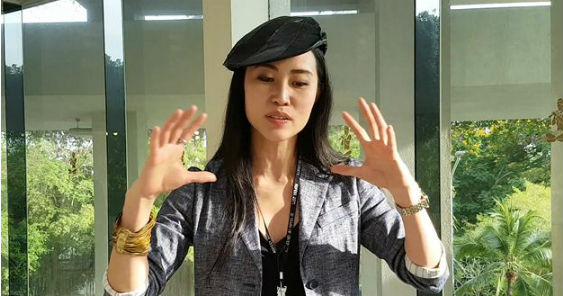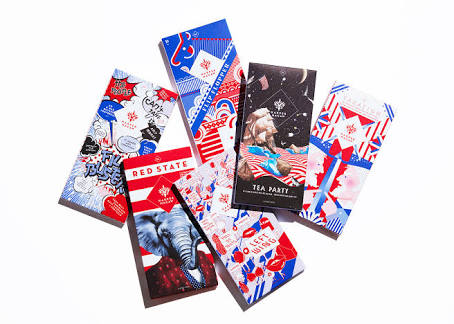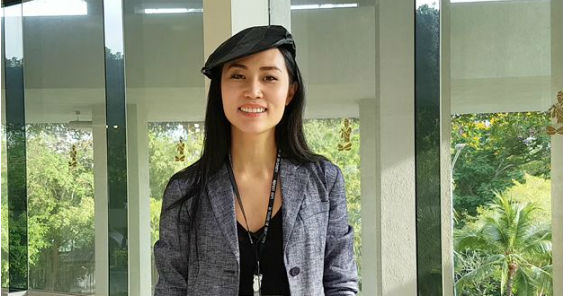PATTAYA – “I think we as marketers have to learn how to seduce consumers without their knowing it,” says Pum Lefebure, Co-Founder and Chief Creative Officer of Design Army in Washington, DC.
As one of the speakers at ADFEST 2017, Pum’s talk on “The Art of Seduction” was one of the festival’s highlights as she elaborated on how marketers and advertisers today face even bigger challenges to make sure their target audience is reached.

DESIGN ARMY REEL 2016 from Design Army on Vimeo.
She notes that, “you first have to flirt with the consumer, then you romance with the consumer, and then you seduce them. I think we live in the era of buying less things and people are much more willing to spend money on experience, so what people really are looking for is the experience, they say, rather than buying things.”
In her talk, Pum cited examples such as scented candles made by Glade, chocolate brand Harper Macaw, as well as new makeup brand Milk to get her point across. “As a female, you put makeup on, eyeshadow, you would have eyeshadow with a brush, or a cheek thing you have another big brush to go on top, and there’s a lip brush, an eyebrow brush, it’s just a mess,” she explains. “That’s why girls take forever to get ready in the morning. Now, Milk tackled the problem by redesigning the way the product is used. Their lipstick, they have this thing called the lip marker, which doesn’t even look like lipstick. It looks like a highlighter.”
“None of their products use any brushes at all,” Pum points out. “So you could literally just put it on your face on the go. So they designed it in a way that it’s almost like how you experience an iPhone: you touch something, you swipe something, you press something, you use your finger to experience the product. It’s very modern, and that’s is why this is the number 1 seller in Sephora right now. People are going crazy because the way you experience the product is quite different.”

Politically-influenced labels by Design Army for Harper Macaw chocolate
As another example of seduction by a brand, Pum presented Restoration Hardware, which repurposed an old art building to serve its purposes. She shared that while renovating one of the rooms in her house, she needed to buy furniture, which led to her discovery of Restoration Hardware.
“It is a furniture store and instead of creating a brand new store in a mall, they decided to convert this vacant building that used to be an art building,” she said of the brand. “They created this 7000 square feet into this unbranded experience. People can go into this store without knowing they’re going into a store and they can sit down in any place in the building. They can order food and there’s no salesperson walking around whatsoever. You can order food, you can sit down anywhere and you can buy anything in the store. That is really brilliant.
“They really focused on using design to solve the retail problem, because no-one is going to the stores at the mall anymore,” she goes on. “So, again, that was an interesting way of seducing me, as a consumer, who is looking for a sofa. Because it’s really annoying to buy from a catalog, or to buy online and the couch shows up a different color, or to go into a mall, which is never a pleasant experience because you have the salesperson standing there trying to sell you something, and your husband doesn’t like the shop, and the whole thing is a mess. That’s how they seduced me: by creating this unbranded experience in this art building.”
At the core of the seduction process, however, is still design. “When you think about it,” she begins, “every thought, every design execution, every process, for example, the Restoration Hardware, you have to involve an interior designer, a graphic designer, a product designer, a visual merchandising designer. All those designers come together to create this meaningful experience.”
“And it’s not about advertising,” Pum cautions. “It’s not about ‘here’s an ad selling a couch!’, or ‘here’s an ad for a couch that’s $4.99’ or whatever. It’s about seducing the consumer to willingly come into your store and spend more than two hours at a furniture store, order food, fall in love with a couch, and maybe walk out with a lamp, a rock, a candle, without any salespersons on the floor. It’s all design. This experience is designed in every single touchpoint as the consumer is walking through this journey. I think that everything begins with design.”









